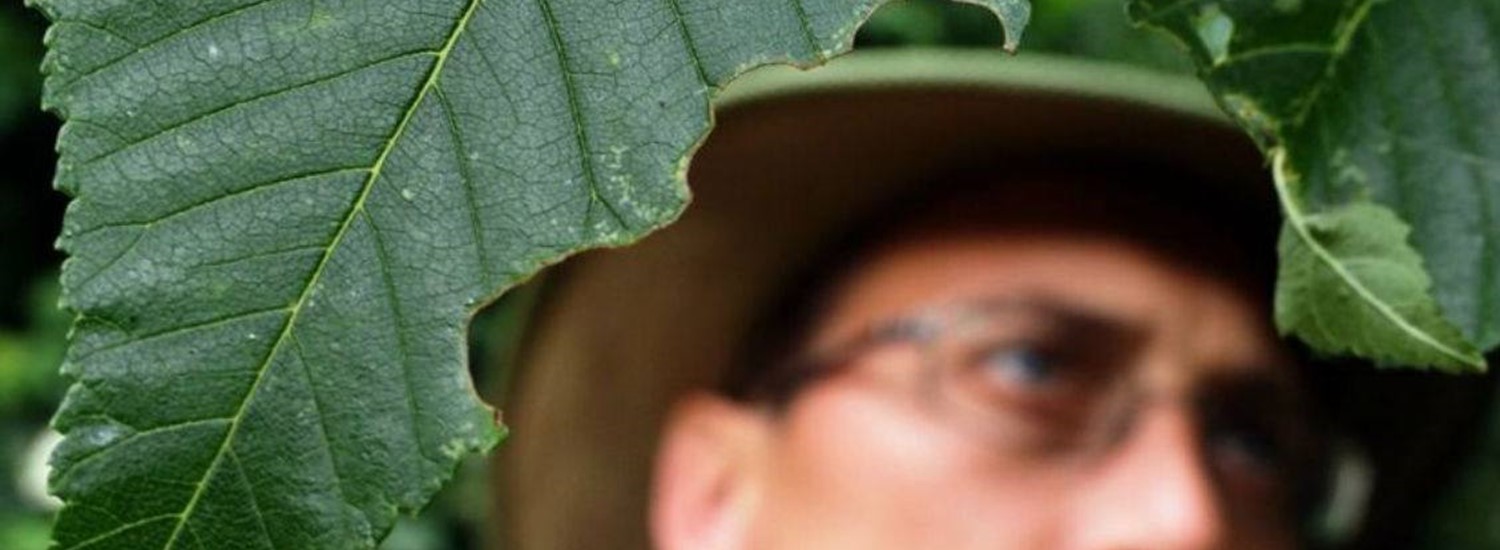The elm tree and the butterfly

"It's almost like the title of a book: ‘The elm tree and the butterfly,’" said Liz Ballard.
The story of the elm and the butterfly began 120 years ago, when planners of Sheffield’s affluent suburbs chose a popular ‘Huntingdon’ elm hybrid for the junction of Chelsea and Union Roads in Nether Edge.
The tree grew rapidly, and attracted a white letter hairstreak butterfly colony to its higher branches. When a virulent strain of Dutch Elm Disease killed millions of British elm trees in the 1970s and 80s (especially the ‘English elm’ species) the Huntingdon elm on Chelsea Road survived.
In the 1990s, however, the tree was ‘topped’ which eventually left several higher limbs and branches rotten. Recent inspections judged the tree Damaging (to roads and pavements) and Dangerous (to people below), at which point the elm and the butterfly started appearing in national and local media and featuring on the ‘Tree of the Year Awards 2016’ TV show with Ardal O’Hanlon.
“So many people being so interested was fantastic,” said Liz Ballard, CEO of Sheffield and Rotherham Wildlife Trust. “But there was a lot of confusion about what exactly the story was.”
Last week Liz joined her colleague lepidopterist Ben Keywood and Sheffield Council biodiversity officer Angus Hunter to look round Nether Edge’s elm trees and shed some light.
The white letter hairstreak has been in national decline largely as a result of Dutch Elm, said Angus, but is not especially rare around Sheffield and Rotherham, with significant colonies in Nether Edge, Fox Hagg, Norfolk Park and Anston Stones Wood, the latter thanks to Ben’s own work as a teenager. (He collected white letter hairstreak eggs from diseased elms and stored them in the family fridge before ‘translocating’ them to branches of healthier trees.) Angus Hunter
Angus Hunter
The same technique was used this spring in Chelsea Park, where a few years ago Angus and team had planted two disease-resistant ‘New Horizon’ elm cultivars.
In February, some of the rotten shaded branches of the Chelsea Huntingdon elm were pruned, and the felled twigs and branches were examined for tiny butterfly eggs by Streets Ahead staff, Trust volunteers and local street tree lobbyists, who eventually found four, two of which appeared to be fertile and hatchable. (Butterflies usually lay their eggs on healthier sunlit branches, noted Angus).
“We celebrated with a box of twiglets,” said Ben.
The egg-hosting twigs were tied to the young Chelsea Park elms, and this week it was confirmed that characteristic leaf nibbling had taken place - it’s hoped that the two hungry hairstreak caterpillars had grown and moved up the tree before falling prey to predatory harlequin ladybirds. (Keen volunteers now scouring Chelsea Park for hairstreaks will find out soon).
Sheffield is host to lots of wych elms, added Angus, a northern British elm species which also supports white letter hairstreaks - wych elms can evade detection by disease-carrying beetles by ‘hiding’ among other trees, said Ben Keywood.
“The wych elm flourishes here because we’re a green city with lots of areas of woodland,” he said. One of which, Greno Wood, hosts a Wildlife Trust experiment to grow new varieties of Dutch Elm-resistant trees in a woodland setting.
Angus is also working on new disease resistant elms for the Outdoor City - 150 cuttings from the Chelsea Road tree are being grown on by a specialist nursery, with an 80-90% success rate so far. In a few years, these clones of the Chelsea Road elm can be re-cloned and planted out across the city for years to come.
“Whatever happens to the Chelsea Road elm, in terms of biodiversity, it’s a win win for Sheffield and all the species that live on our elm trees,” Angus said. Some of which are preparing to emerge any time now and flutter around the treetops of Nether Edge.
The moral of the ‘elm tree and the butterfly’ story is simple, said Liz Ballard: “Working together is better for wildlife.”